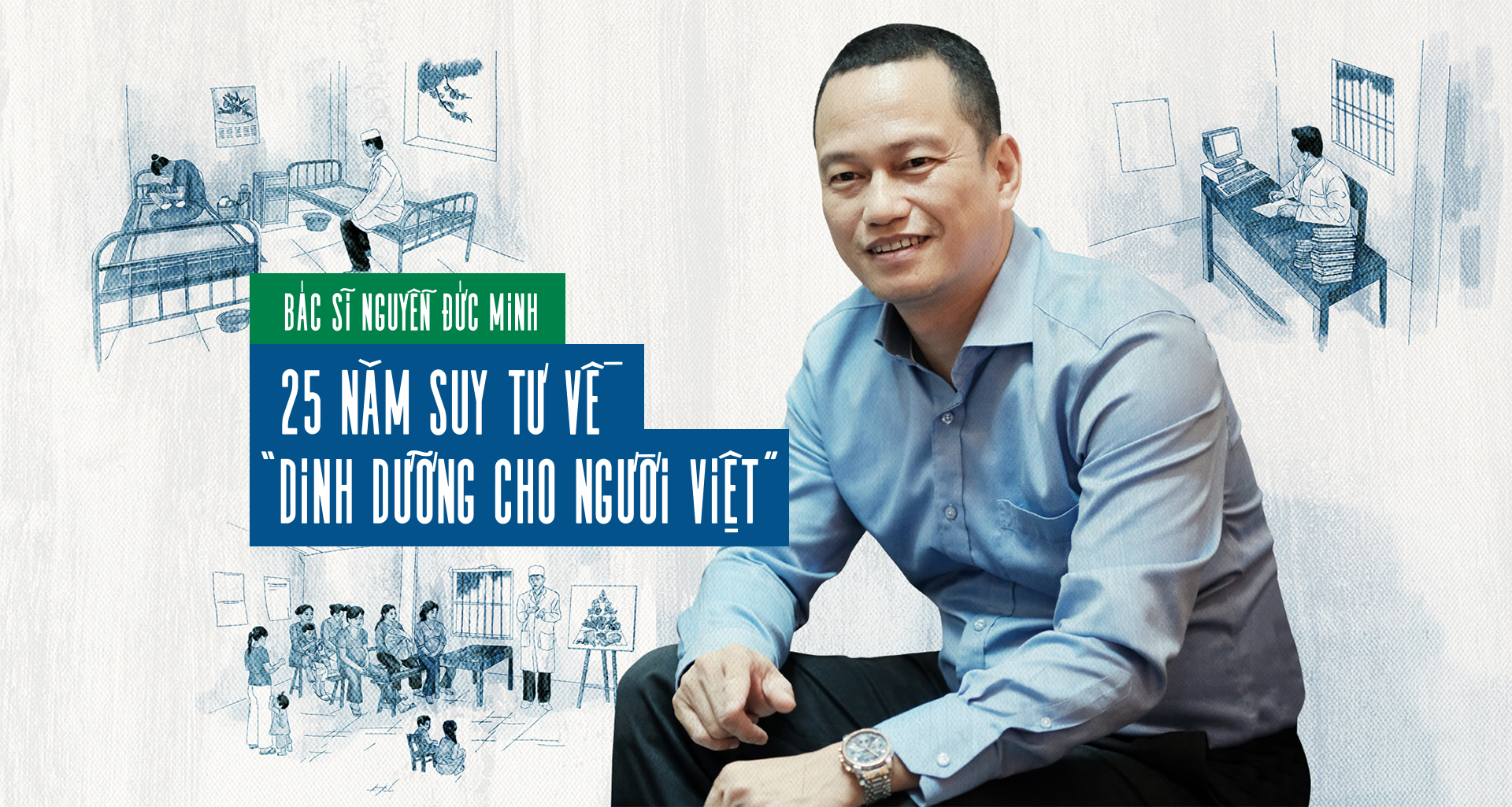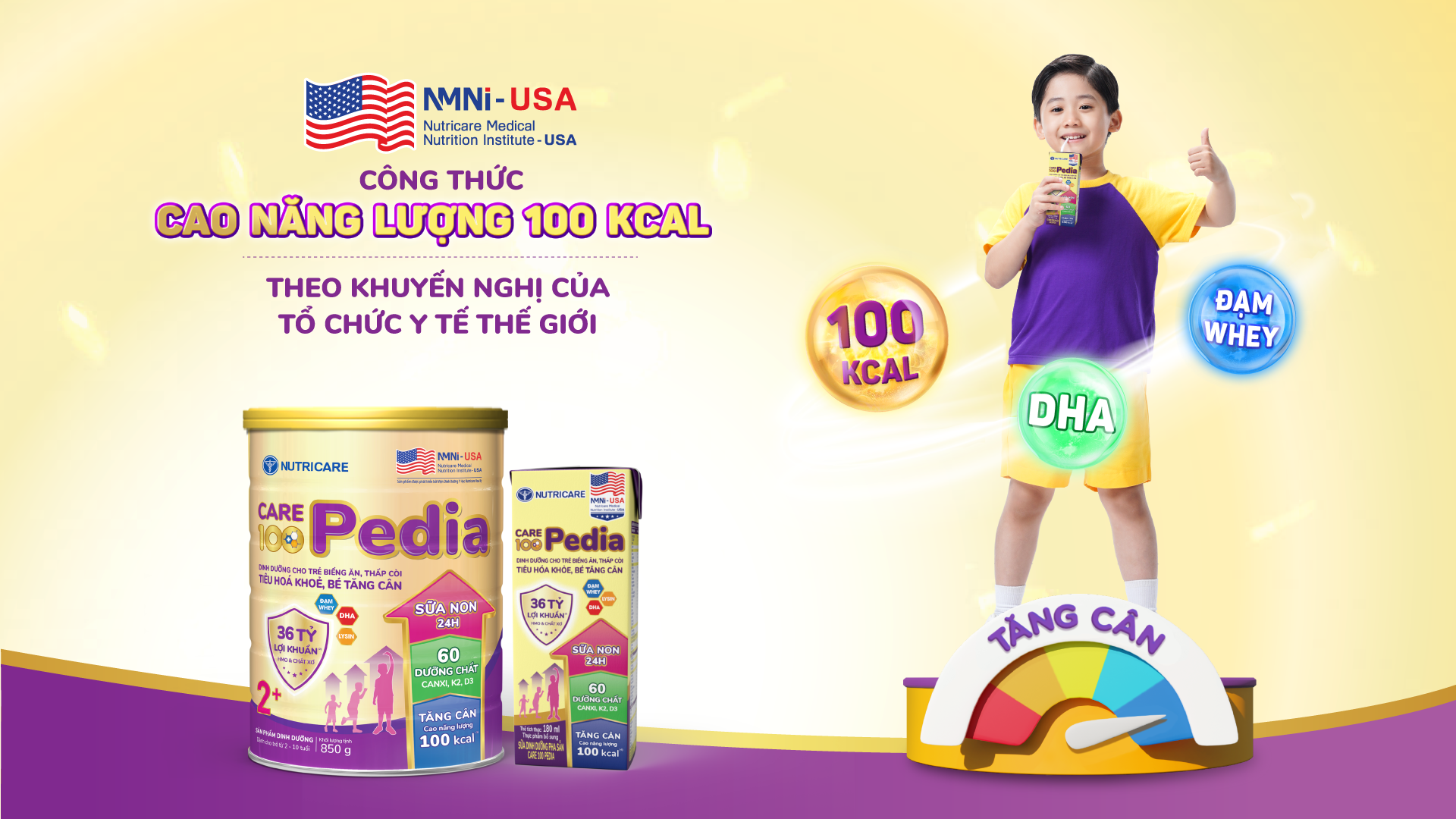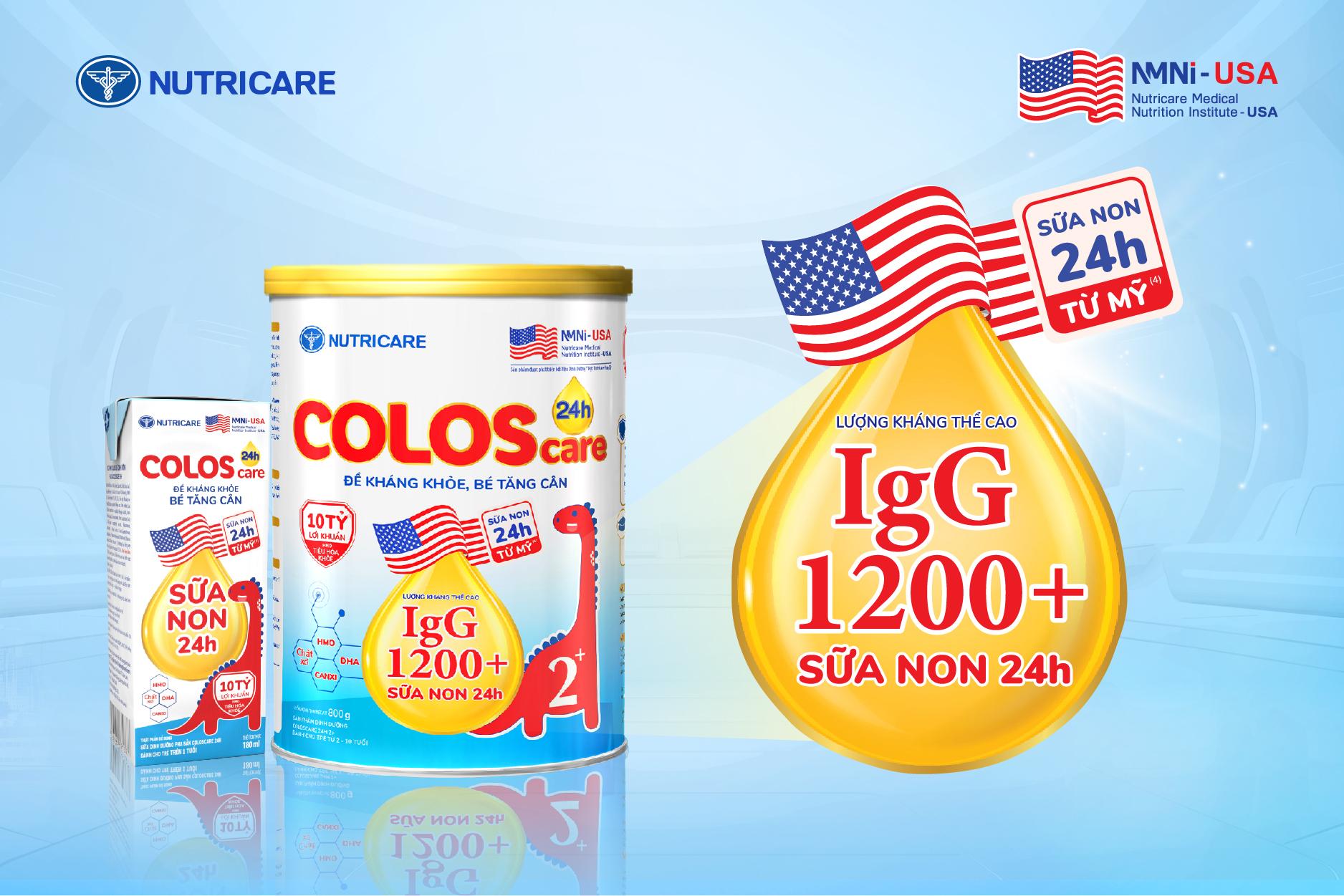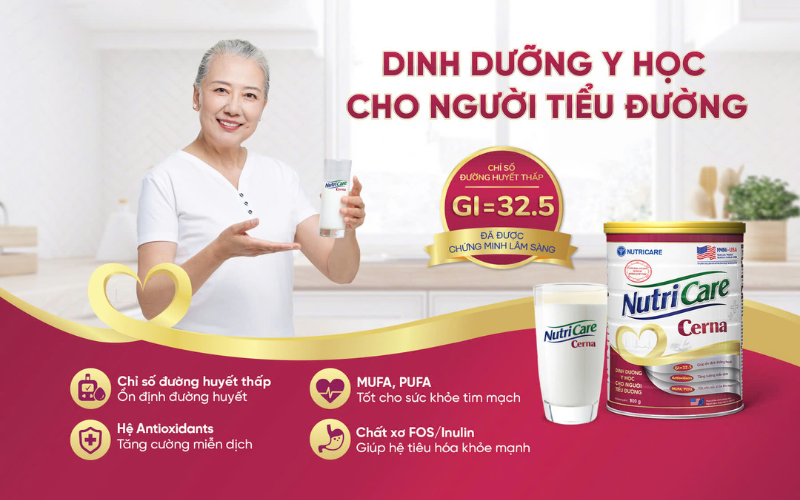Doctor Nguyen Duc Minh – 25 year contemplating about “Nutrition for Vietnamese”

The story of Dr. Nguyen Duc Minh – General Director of Nutricare, one of the pioneers in the development of medical nutritional milk formula in Vietnam and his journey to bring that formula to the Vietnamese.
(According to Vnexpress) In 1935, British scientists in the colonial Gold Coast – part of Ghana in present-day Africa – described a childhood disease called “kwashiorkor”. In the native Ga language, kwashiorkor means “a child’s sickness at birth”.
These babies, when the mother gives birth to another child when they are still too young, will have to wean early and switch to a “weaning” diet entirely with cornmeal. At first, they appeared to be normal. But after a while, babies with “kwashiorkor” will stop gaining weight, or fussy, edema begins to appear on the arms, legs, and face.
Kwashiorkor later became the official name for edematous malnutrition due to a lack of plasma proteins. And with its name in the Ga language, as a metaphor, the disease has always been tied to the economic and social contexts of poor regions around the world, from Africa to Latin America – where the staple food for Post-weaning babies are starches. They quickly become “baby powders”, chubby at first glance, but the muscles are lumpy with damaged internal organs.
Six decades later, fourteen thousand kilometers from Ghana, in a rural area of northern Vietnam, Dr. Nguyen Duc Minh still saw children with severe malnutrition, caused by false cognitive. His memory captured the haunting moment when he pulled shut the eyes of those miserable children.

Do you have enough food to eat?
That was in 1996, Minh just graduated and became a doctor. He claimed to have a “peaceful” childhood in a small mountainous town, his parents worked as officers and “had decent meals without adding poor foods.” “At that time, there was no concept of nutrition, only enough to eat”, Dr. Minh described the psychology of the 70s, “No one even used the word “nutrition”. They asked each other if your family had enough to eat, visiting each other’s house at New Year Holiday and the question would be “Could you make a living last year?”
Having enough to eat simply means not feeling hungry. For decades, exhausted from warfare and embargoes, this was the single most important living criterion the vast majority of Vietnamese could care about. The feeling of “fullness” is created, or even simulated, by many sources of starch, sorghum or even green bananas, for adults and for children who will later be severely malnourished.
The 70s and 80s passed, and the Innovation period took place; the 1990s kicked off with the removal of the embargo. The economy has improved, but then “enough to eat” is still a powerful concept in Vietnamese customs.
Vietnamese people in many places still use “full” as the criterion of life. “They didn’t even use the concept of “protein”, as a member of the National Institute of Nutrition, Nguyen Duc Minh realized that improving nutrition for Vietnamese people is a double battle: on the one hand, is struggling with economic conditions; and the other hand, is struggling with conservative perception.
When Doctor Minh started his career, in many areas of Vietnam, postpartum mothers were still forced on a diet by their parents-in-law. In some areas, they abstain from snails, eel, and sour food. Some regions believe that they should not foster pregnant women because big fetus are difficult to give birth to, causing danger to the life of both the mother and the child, “pregnancy is 1 step from death door”. He saw pregnant women at the age of 19, who were pregnant but still growing taller – at an age where people should have been fully developed, but due to lack of food and nutrition, they are still growing.
At that time, it was the job of the nutrition staff to go to each locality, to do what today seems inevitable: Teach pregnant women to add an egg to the meal, add a spoonful of cooking oil to the child’s baby powder, paste the nutrition towers on the clinic or school headquarters.
People in many places still refused. Eggs are fishy, and children who eat flour are still “full”. In 1995, international scholars began to call Vietnam the “new dragon”. But in the villages, the young doctor still saw children with atrophic kwashiorkor or marasmus. “They have the faces of the old man. There was no fat under the skin, the skin was attached to the skulls”, Dr. Minh remembers the faces of the children he saw.

“In many regions, they saw children as “little” adults. They ate just like other family members. If they couldn’t eat rice, they could eat porridge instead. If they could eat rice, they would sit together with the whole family. If adults ate rice with soup, so did children.”
That was the prolonged battle with perception. There were projects to give people some super egg-production chickens to breed and feed the children with the egg. But on the day of receiving, the man of the house used them as a dish for the dinner instead.
For 15 years, the young man kept going all over the country and witnessing the nutritional problems of the Vietnamese people. The doctor was loyal to his mission, but from the years 97 and 98, he believed that there were other ways to solve the problem of malnutrition among Vietnamese children; rather than just relying on improving the parents’ awareness. But at that time, in the difficult economic context, Minh did not realize what that solution was. People just initially started to know about “micronutrients” through the propaganda programs about vitamin A by UNICEF, or iodine of the government.
After another decade, with Asia’s leading economic growth and the success of the National Strategy on Nutrition, awareness gradually improved. Words that used to be luxury such as “nutrition”, “vitamin”, “iodine” or “protein” became obvious. Vietnamese people understand that they not only need to fill their stomachs but also need to eat properly.
But what does “properly” even mean? That was when Dr. Nguyen Duc Minh saw more clearly the problem. “There were things that can be improved through changing the perceptions. On the other hand there were problems that couldn’t be solved that way” he thought. He gave an example: selenium, an essential mineral that helps to protect the body against free radicals, thereby preventing a number of chronic diseases such as cancer, cardiovascular … but barely known. The Vietnamese body is very deficient in selenium but very difficult to recognize, “because we never learn about such things”.
“To save the malnourished children, teaching their parents is just not enough yet”, Dr. Minh said.
FORMULA FOR VIETNAMESE PEOPLE
In 2008, HEMA – a project to support the health of the poor funded by the European Union – consulted Dr. Nguyen Duc Minh to advise on a nutritional formula to restore malnourished children in Vietnam.
Dr. Minh is a research lover. Each time he sat at the table to read scientific documents, researched nutritional formulas, he sat there for so many hours to find, classify and verify nutritional response thresholds in different communities, that many times he exhausted himself stood up groggily. He agreed to HEMA: this is the first prospect that any concerns in the past 10 years have come to fruition.
Having a specific formula for nutritional support for children in each country is something the world has done for a long time, but in Vietnam, in Dr. Minh’s understanding, this is unprecedented. He remembered reading more than 50 of world clinical trials to find specific nutritional formulas for Vietnamese children. “I got dizzy every time I stood up”, and the obsolete computer of a decade ago was not strong enough, often be so hot that it shut down.

That was the first decade of the 21st century. Vietnam’s economy is a bright spot in Asia. There are no longer “baby powder” who can only eat weaning from porridge, but prejudices still exist. Many people begin to nutritionally supplement their babies with imported milk, unaware that these are recipes specifically designed for indigenous children.
Doctor Minh took an example, in an island country like Japan, where iodine from everyday foods (sea fish) is very abundant, this micronutrient is not the preferred addition to formula milk – while Vietnamese children are in need. Vietnam needs its own recipe, based on its own diet, disease patterns, environment and culture.
But then the formula of doctor Nguyen Duc Minh is only wrapped in the framework of the project. The European Community spent up to 15 million USD, but only more than 30,000 children received nutritional support; The remaining activities are mainly awareness-raising. The fate of this recipe is to be kept in a closet.
The story seemed to end that way. At that time, Dr. Nguyen Duc Minh was the deputy director of a Research Institute, had a clinic in the center of Hanoi and stable life. But the urge to bring Vietnamese nutritional recipes to Vietnamese people never ceased to motivate him. After 15 years living in the environment of government and non-government projects, he saw opportunities across the horizon: The market.
One day in October 2010, Mr. Minh decided to gather a group of friends to present the prospect of a line of formula exclusively for malnourished children in Vietnam. Until that time, the world’s major dairy companies were using a generic formula designed for geographic regions, not individual countries.
His friends, some could afford the investment, some had to pledge the very house they were living in for money, but they all believed in the faith of Dr. Minh, and thousands of hours of research he had spent. They believed that the longing expected product deserves to exist.

Nutricare Company was born that way. The first product was Care 100, built from the formula that seemed to have to “be kept on the closet” that Dr. Minh had written for a European project 2 years ago.
WHAT VALUE DID HE CREATE?
The company started with a production area of just over two hundred meters square, rented at a low price thanks to a program to support the start-up of the European Community (EC). Small scale, but Nutricare’s first batch of milk fully met ISO 22000 -2005, GMP, and HACCP standards.
Nutricare did not spend a single penny on advertising in the first 2 years. But then the growth rate is increased monthly. The first products are mainly sold to acquaintances, “people spread the news, and it went viral”, Dr. Minh remembered. Mothers realized the effectiveness of Care 100’s milk on their babies: They did not know about the scientific research behind the product, but they did see their babies’ desire for the milk, their babies ate better, and the children who are malnourished, often got constipation, no longer were.
Two production zones then expanded into three areas, Nutricare’s milk products were often out of stock. After only two years, the scale of the production complex had increased to 6,000 square meters; and after 5 years, Dr. Minh and his teammates built a separate factory for Nutricare.
The story could end, once again. The company had its own reputation, the expert put his formula into practice, and the Vietnamese had an additional solution for child nutrition.
But after 10 years, the doctor still had many concerns like 25 years ago. There were still groups of Vietnamese people who have yet to meet their nutritional needs, and he still could solve the problems scientifically. Nutricare had the thickest product portfolio on the market: Dr. Nguyen Duc Minh’s company also has nutritional milk products for people with kidney disease, liver disease, cancer, and thyroid disease. And sometimes, some product lines go against the certain rules of the market: There are products for such a small group that could be sold only 4-5 packages A MONTH, while the production line requires a large volume to operate to meet the breakeven point. The loss is certain, shipping and distributing such product lines are “extremely miserable”.

“Products for young children have reflux, selling only 4-5 crates per month. A small child doesn’t eat much, and when he completes the diaphragm and X wire, he stops using it”, Mr. Minh analyzed, “But we did not choose any product or service to do business, we chose to serve any needs to create value. There are things that you know you still have to do nevertheless”.
“Nutricare employees also have the right to understand what we do, that we are creating health care products for people, rather than doing “hazy” stuffs” the doctor explained, from an organizational building perspective.
Sometimes, there is a conflict between a CEO and a researcher. “Until now, I am struggling between running the business, or serving the community,” he said, but at the end of the day, we still maintain the lines of nutritious milk for minor groups, such as thyroid disease. “I choose to do that because no one else does”. The motivation for making those products is identical with the motivation of making Care 100 product, which created our reputation and conquered the market” he said.
“There are things we commit to giving away because it originates the meaning of our existence”, the doctor concludes Nutricare’s 10-year journey of discovering nutritional recipes for Vietnamese people. “The reason for our presence is to create values for the society and community”.

Thank you for leaving a review











Trả lời
Email của bạn sẽ không được hiển thị công khai, các trường bắt buộc nhập được đánh *